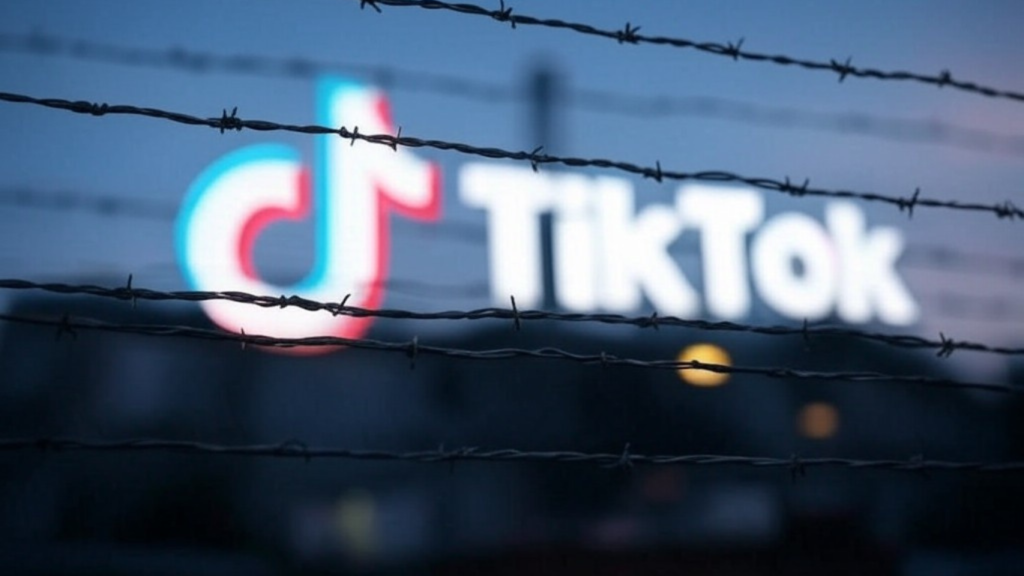TikTok Ban Update:
Here is TikTok Ban Update. The U.S. Supreme Court recently heard oral arguments regarding the controversial TikTok ban. The case has garnered national and international attention as the court considers whether to uphold a law that requires ByteDance, TikTok’s Chinese parent company, to divest from the platform or face a nationwide ban starting January 19, 2025. This decision stems from growing concerns about national security risks tied to Chinese government influence. Here is a comprehensive breakdown of the case, its implications, and what it means for TikTok’s future in the U.S.

Background: Why is TikTok Under Fire?
TikTok, the popular short-form video platform, has become a dominant force in the social media landscape, with over 170 million U.S. users and billions worldwide. Despite its popularity, the platform has faced scrutiny over its data privacy practices and potential ties to the Chinese government through ByteDance.
In April 2024, Congress passed legislation mandating that ByteDance either sell its U.S. operations or face a complete ban. Lawmakers have expressed fears that TikTok could be used by the Chinese Communist Party (CCP) for espionage, propaganda, or even blackmail. Although TikTok has repeatedly denied these claims, arguing that its data is stored securely in the U.S. and Singapore, the U.S. government remains unconvinced.
The Legal Battle: National Security vs. Free Speech
The Supreme Court’s decision will hinge on two critical issues: national security and free speech. The Biden administration argues that the ban is essential to protect U.S. citizens and prevent potential exploitation of sensitive user data. Solicitor General Elizabeth Prelogar stated during the hearing:
“TikTok’s vast data collection could provide the Chinese government with a powerful tool for surveillance and coercion.”
On the other hand, TikTok’s legal team contends that the ban infringes upon the First Amendment. Attorney Noel Francisco argued that the ban unfairly targets a single platform and lacks evidence of wrongdoing:
“The fears are hypothetical. There is no concrete proof that TikTok has ever shared data with the Chinese government.”
The Supreme Court must now determine whether the sell-or-ban law is a reasonable measure to safeguard national security or an overreach that stifles free speech.
Key Moments from Oral Arguments
The oral arguments provided insights into the justices’ perspectives:
1. Support for the Ban
Chief Justice John Roberts and Justice Brett Kavanaugh emphasized the importance of addressing national security risks. Roberts stated:
“This isn’t about censoring speech; it’s about controlling foreign ownership that could harm Americans.”
Justice Kavanaugh echoed these concerns, highlighting the potential for China to misuse TikTok data to influence U.S. politics or compromise individuals in sensitive roles.
2. Concerns About Overreach
However, not all justices were convinced. Justice Neil Gorsuch questioned whether less drastic measures could achieve the same goal, such as requiring transparency reports or data audits. Similarly, Justice Elena Kagan compared the situation to Cold War-era threats, noting:
“Even during the height of Soviet propaganda, we allowed some level of foreign communication. Why is TikTok different?”
Implications of a TikTok Ban
If the Supreme Court upholds the law, the ban will take effect on January 19, 2025. Here’s what that could mean:
For Users
TikTok will be removed from app stores, preventing new downloads.
Existing users may experience a degraded experience as updates cease.
For Businesses
Small businesses that rely on TikTok for marketing could face significant setbacks. Giselle Campagna, co-owner of Toro Food Concepts in Denver, credits TikTok for saving her business during the pandemic:
“A single viral video brought in thousands of new customers. Losing TikTok would be devastating.”
For U.S.-China Relations
The case represents a broader trend of increasing scrutiny on Chinese-owned technology. Experts believe this decision could set a precedent for future actions against foreign-owned platforms.
Broader Context: The U.S.-China Tech Rivalry
The TikTok case is part of a larger geopolitical struggle between the U.S. and China. In recent years, the U.S. has taken a tougher stance on Chinese technology companies, citing concerns about data security and intellectual property theft. Other platforms, like Huawei and WeChat, have faced similar scrutiny.
Darrin Duber-Smith, a business professor at MSU Denver, explains:
“The U.S. government’s message is clear: foreign control of critical technology is no longer acceptable.”
What’s Next?
The Supreme Court is expected to announce its decision soon, potentially granting an injunction to delay the ban. However, even if the ban is upheld, its enforcement may depend on the incoming administration. President-elect Donald Trump has suggested he might negotiate a deal to preserve TikTok in some capacity.
In the meantime, TikTok users and businesses should prepare for potential disruptions. Experts recommend diversifying marketing strategies and exploring alternative platforms like Instagram Reels and YouTube Shorts.
Conclusion: A Defining Moment for Tech Regulation
The Supreme Court’s ruling on TikTok will have far-reaching implications, not just for the platform but for how the U.S. regulates foreign-owned technology. At its core, the case raises fundamental questions about the balance between national security and individual freedoms.
As the January 19 deadline approaches, all eyes are on the Supreme Court and its decision. Whether TikTok survives or exits the U.S. market, the outcome will shape the future of tech regulation and the U.S.-China relationship for years to come.
Stay tuned for updates as this critical case unfolds.
I don’t think the title of your article matches the content lol. Just kidding, mainly because I had some doubts after reading the article.